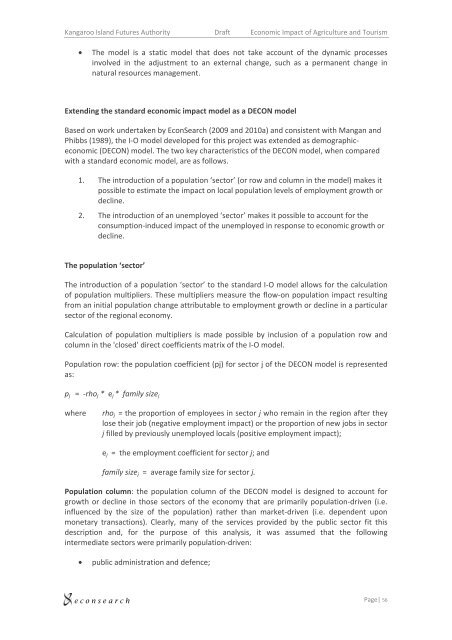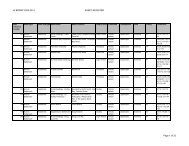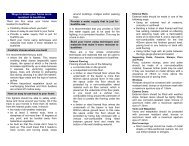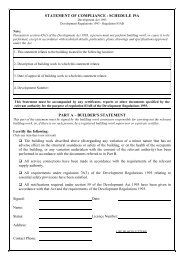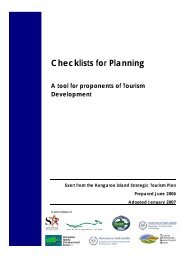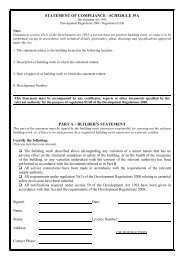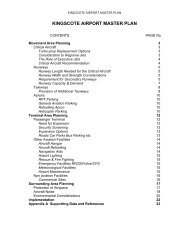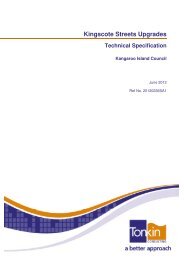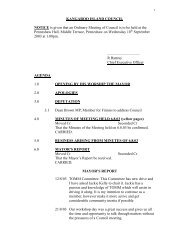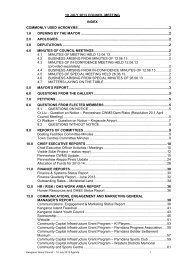Kingscote Airport Business Case Appendices - Kangaroo Island ...
Kingscote Airport Business Case Appendices - Kangaroo Island ...
Kingscote Airport Business Case Appendices - Kangaroo Island ...
- No tags were found...
You also want an ePaper? Increase the reach of your titles
YUMPU automatically turns print PDFs into web optimized ePapers that Google loves.
<strong>Kangaroo</strong> <strong>Island</strong> Futures Authority Draft Economic Impact of Agriculture and Tourism• The model is a static model that does not take account of the dynamic processesinvolved in the adjustment to an external change, such as a permanent change innatural resources management.Extending the standard economic impact model as a DECON modelBased on work undertaken by EconSearch (2009 and 2010a) and consistent with Mangan andPhibbs (1989), the I-O model developed for this project was extended as demographiceconomic(DECON) model. The two key characteristics of the DECON model, when comparedwith a standard economic model, are as follows.1. The introduction of a population ‘sector’ (or row and column in the model) makes itpossible to estimate the impact on local population levels of employment growth ordecline.2. The introduction of an unemployed ‘sector’ makes it possible to account for theconsumption-induced impact of the unemployed in response to economic growth ordecline.The population ‘sector’The introduction of a population ‘sector’ to the standard I-O model allows for the calculationof population multipliers. These multipliers measure the flow-on population impact resultingfrom an initial population change attributable to employment growth or decline in a particularsector of the regional economy.Calculation of population multipliers is made possible by inclusion of a population row andcolumn in the 'closed' direct coefficients matrix of the I-O model.Population row: the population coefficient (pj) for sector j of the DECON model is representedas:p j= -rho j * e j * family size jwhererho j = the proportion of employees in sector j who remain in the region after theylose their job (negative employment impact) or the proportion of new jobs in sectorj filled by previously unemployed locals (positive employment impact);e j = the employment coefficient for sector j; andfamily size j = average family size for sector j.Population column: the population column of the DECON model is designed to account forgrowth or decline in those sectors of the economy that are primarily population-driven (i.e.influenced by the size of the population) rather than market-driven (i.e. dependent uponmonetary transactions). Clearly, many of the services provided by the public sector fit thisdescription and, for the purpose of this analysis, it was assumed that the followingintermediate sectors were primarily population-driven:• public administration and defence;e c o n s e a r c hPage| 56


